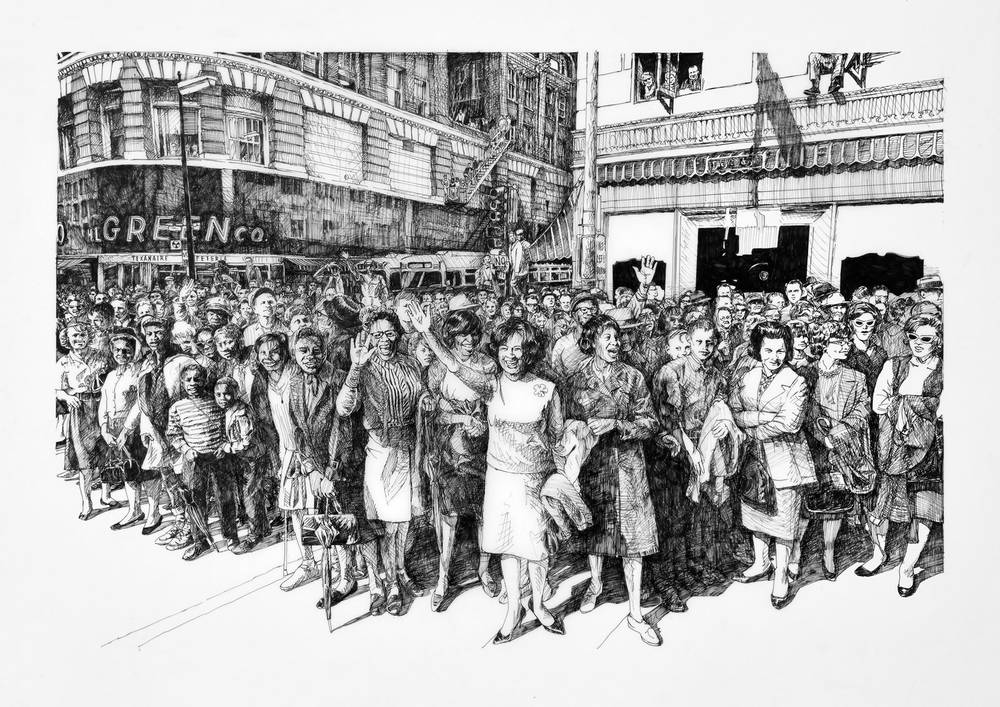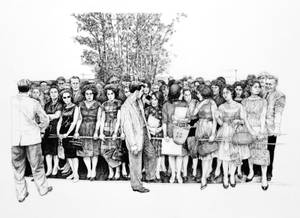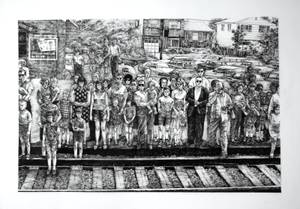In mining historical archives for Kennedy-era photographs, artist Deborah Aschheim bypassed images of the famous family, opting instead for the crowds caught up in the reverie and spirit of Kennedy fever.
In Kennedy Obsession, on display at UNLV’s Barrick Museum, her large-scale drawings (based on historical photographs) return to life the national optimism of the time and a pre-Nixon respect for public office. But how those moments are recalled is the thrust of Aschheim’s work. As she notes about memory, “every act of retrieval is an act of recoding.” Long invested in memory-based projects and residencies (including those dealing with dementia patients), the artist continually explores the mental processes of remembering by collecting stories. Her interest is the recent past, such as the Kennedy years, which she says exist somewhere between memory, history and myth.
The detailed ink drawings in Kennedy Obsession create an intimate connection for the viewer, bringing past to present. But eerily, we know we have information that those featured didn’t have at the time, offering us a more complex interpretation of particular moments.
For example, “November 22, 1963 (Main Street)” shows an exhilarated crowd lined up roadside in the bright sunlight to see President Kennedy and his motorcade. The drawing is made from a photo taken just minutes before Kennedy’s car turned into Dealey Plaza, where he would be assassinated. Other images show Kennedy greeting crowds, whether on travels to Latin America or on the White House lawn—posed photo ops of enamored voters or science students meeting the Commander in Chief. Mourners pay respect to the late Bobby Kennedy as his body travels past by train.
The drawings, made from rarely seen photographs, some taken from contact sheets and not yet digitized, focus on the people rather than the Kennedys. For them, the memory is more monumental and lifelong, says,Aschheim, an artist in residence at UNLV this semester. But to whom the “obsession” belongs is open-ended.
For Aschheim, the Kennedy era represents a mythical time, the end of optimism and the point in her childhood when her memories were beginning to fully develop. But it was so defining in people’s lives that a San Francisco clinic dealing with memory (where Aschheim was an artist in residence) asks patients where they were when Kennedy was assassinated as part of a neurological exam. “That’s how big it is,” she says, that it implies “if you can’t remember that, then something’s wrong.”
Kennedy Obsession Through June 6; Monday- Friday, 9 a.m.-5 p.m. (Thursday until 8 p.m.); Saturday, noon-5 p.m. Barrick Museum, 702-895-3381. Opening reception March 20, 6-8 p.m.









